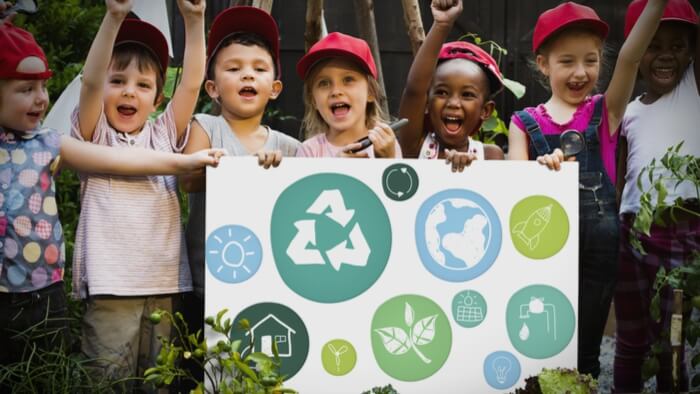“Even if you don’t believe in climate change, wouldn’t you just prefer Breathing cleaner air?” Building on the momentum of global school strikes organized in the spring of 2019, about four million students took to the streets around the world on 20 September 2019. Millions of young people raised their voices at protests around the world in a massive display meant to demand urgent action on climate change also joined by teachers and parents.
In the U.S more than 800 marches were planned, thousands of young people were absent from classrooms so they can carry signs, march and shout slogans calling for a new approach to energy and emissions.
“I’d rather go to protest about the Earth and how something’s going wrong than sit in my classroom and act like nothing’s happening,” high school student Harshita Ray tells members station WOSU in Columbus, Ohio.
There, 16 year old climate activist Greta Thunberg who had reached the event in a sailboat to reduce her trip’s carbon footprint also she addressed the UN general assembly with a passionate speech.
This is not the first time that children and teenagers rallied globally for protecting environment or for a common cause. We’ve seen peace protests and civil rights movements in the 1960s, and later, demand for social and economic justice in the aftermath of the 2008 global financial crisis. Researchers on social protests have highlighted the importance of the digital revolution in organizing young people. The internet and social network help young people to organise grassroots level movement.
Environmental issues have been on the political radar for over 5o years, and while the level of expected impacts have hit an all-time high, predictions for the future course and effects of environmental degradation were not any more promising decades ago than they are today.
Now the question arises that why are young people only reacting now with such a heightened sense of urgency?
To understand youth’s sensitivity to environmental issues, we need to look at how the environmental awareness of today’s youth has evolved over time. It can be argued that environmental education has played an important role in spreading awareness. Environmental education allows individuals to explore environmental issues, engage in problem solving, and take action to improve the environment. As a result, individuals develop a deeper understanding of environmental issues and have the skills to make informed and responsible decisions. It has been discussed internationally since the 1970s, with leading global organizations (UNESCO and UNEP) establishing programmes and guidance on how to integrate environmental teachings into education.
Environmental Education is not just a part of the school curriculum that is taught to students, but it also includes generating public awareness by the use of print media, media campaigns, websites, and others. Many zoos, aquariums, parks include information about the environment and their impacts on the life forms that is imparted to the visitors.
In November 2019, Italy’s education minister announced that from the following school year, schools would require children in every grade to study climate change and sustainability. Talking about India, Recently the Supreme Court asked the Ministry of Human Resource and Development to constitute a core committee to monitor and ensure that all state boards comply with the order seeking implementation of the directive to make environment education a compulsory subject in schools across the country. Voice of Environment is disseminating information through various channels to put pressure on the union and state governments to make this happen.
Climate protests by youth’s on social media are a powerful vehicle of informal environmental education. The “Greta Thunberg effect” has already resulted in increased awareness about issues in both children and adults.
Unfortunately, environmental education has received less attention from policy makers and public, compared to other environmental democracy aspects. The most significant challenges that were found include over-crowded curriculum, lack of resources, low priority of environmental education in schools, limited access to the outdoors, student apathy to environmental issues, and the controversial nature of sociopolitical action.
Environmental education is the need of the hour. We know that thousands of animals and forests are dying due to human activities. We must take every step that can preserve our mother earth. All the crisis that we are facing, environmental education can bring much needed change. When we teach kids early on about the importance of the environment, we pave way for a greener and beautiful environment.


